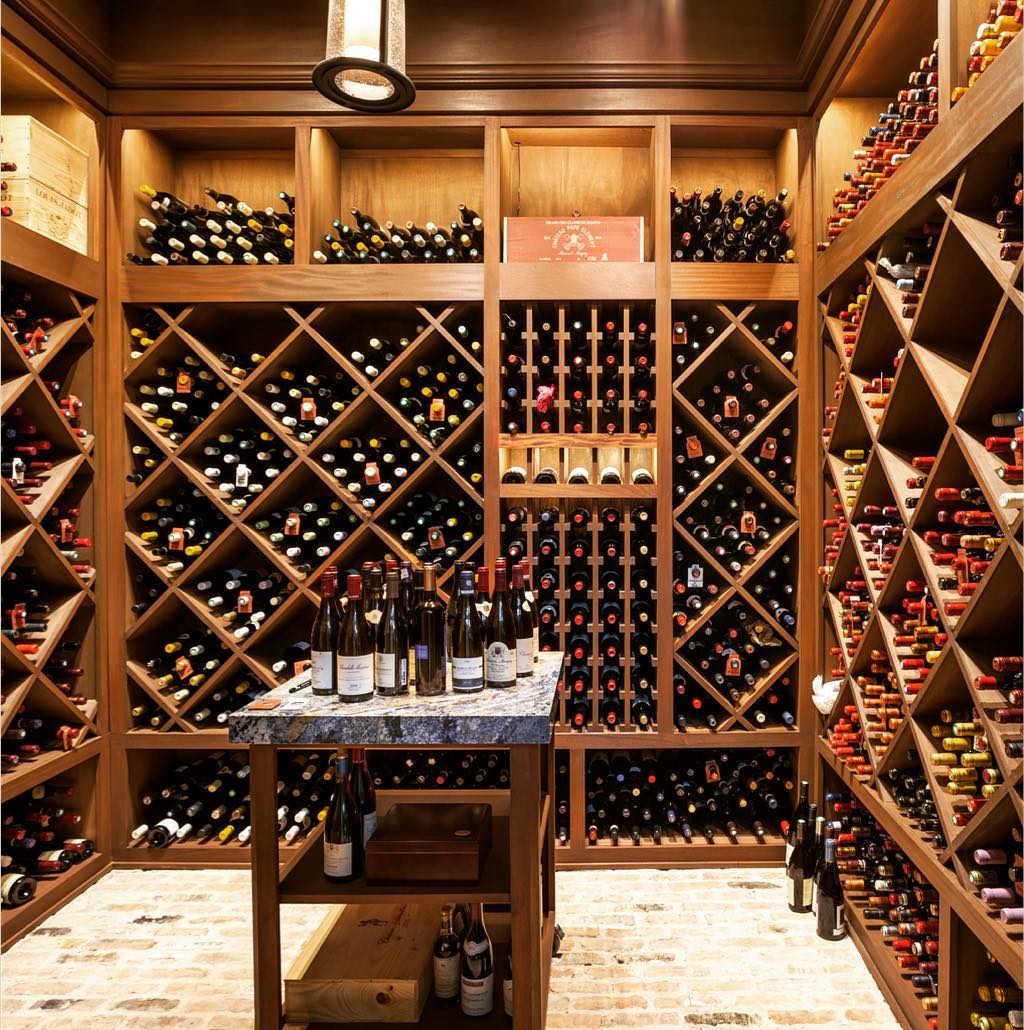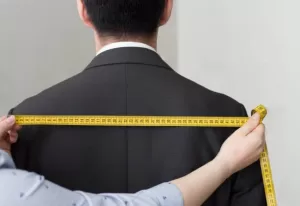
Introduction to Wine Cellar Essentials
Building a home wine cellar can be an enriching and rewarding experience. It serves as a dedicated space to store and age your wine collection properly. The key to success lies in the attention to detail and a thorough understanding of the necessary conditions for wine preservation. Whether you’re an avid collector or a casual enthusiast, having a custom home wine cellar allows you to enjoy your wine at its best.
Understanding the Importance of a Dedicated Wine Storage Area
– **Maintaining Optimal Conditions**: A dedicated wine storage area is essential for controlling temperature, humidity, and light, all of which play pivotal roles in the aging process of wine.
– **Avoiding Spoilage**: Fluctuations in these conditions can lead to spoiled wine, making the investment in a high-quality storage solution paramount to preserving your collection.
– **Organizational Benefits**: A well-designed cellar not only protects your investment but also allows for easy organization and access to your wines.
Primary Considerations Before Embarking on a Wine Cellar Project
– **Location**: Choose a space in your home that can maintain a consistent temperature and is away from direct sunlight or heat sources.
– **Space Analysis**: Assess the space available to determine the size and design of your cellar, ensuring it can accommodate your current and future collection.
– **Budget**: Establishing a budget upfront helps guide decisions on construction materials and climate control systems.
– **Climate Control**: Invest in a quality climate control system to maintain the specific temperature and humidity levels necessary for preserving and aging wine.
– **Insulation and Vapor Barrier**: Proper insulation and a vapor barrier are crucial to maintain the cellar’s internal climate and prevent external conditions from affecting the wine.
– **Racking System**: Select a racking system that complements your space and suits the size and variety of your wine collection.
– **Lighting**: Choose lighting fixtures that won’t emit a lot of heat and consider UV-protected bulbs to minimize the risk of light damage.
– **Security Features**: Consider security measures to protect your valuable collection, such as locks and monitoring systems.
– **Aesthetics**: Design your cellar to be not only functional but also a reflection of personal taste, which can add to the overall enjoyment of the wine collecting experience.
– **Professional Consultation**: Engage with professionals for technical aspects such as refrigeration and construction to ensure the cellar meets all necessary standards.
Building a home wine cellar can indeed be quite the undertaking. But with the right planning, tools, and information at hand, creating the perfect environment for your treasured wines can not only enhance their longevity but also provide a sanctuary for the wine lover in you.
Choosing the Ideal Location
When I set out to create a wine cellar in my home, the first and arguably most important step was to select the right spot. Not every nook or basement is created equal, and the location of your wine cellar can impact not just the preservation of your wine but also the overall feel and functionality of the space.
Assessing Your Home for the Best Wine Cellar Spot
I began by thoroughly examining my home to identify potential areas that could accommodate a wine cellar. There are several key factors that I considered during this assessment:
– **Stable temperature and humidity:** Wine thrives in a stable environment. I searched for an area that naturally maintained a consistent temperature and wasn’t prone to fluctuations.
– **Vibration:** A quiet spot is essential, as vibrations can disturb the sediment in wine and affect its aging process.
– **Light exposure:** I aimed for a location with minimal light, especially direct sunlight, which could degrade the quality of my wine.
– **Accessibility:** While it’s not the primary concern for wine preservation, choosing a spot that is practical for frequent visits is important for enjoying the collection.
– **Size and expansion:** The space had to be large enough to store my current collection but also allow for future growth.
After considering all these factors, I narrowed down my options within my home.
Insights on Basement Wine Cellar Benefits
The basement quickly emerged as the front-runner for several reasons:
– **Consistent Conditions:** My basement naturally maintains a cool and stable temperature, which is ideal for wine storage year-round.
– **Reduced Light Exposure:** With few or no windows, basements typically offer protection from harmful UV rays without the need to invest in special lighting or window treatments.
– **Vibration Control:** Being the foundation of the house, the basement is less affected by daily vibrations from traffic or household machinery.
– **Expandability:** The basement provides ample space, allowing me to think big and accommodate more bottles as my collection grows.
In essence, the basement offered the perfect blend of functionality and protection for my valuable wine collection. With the location settled, I could then focus on the specifics of budgeting, designing, and outfitting my dream wine cellar – confident in the knowledge that the foundation I had chosen would contribute to the perfect aging of my wines.
Keeping each of these elements in mind was vital in my quest to create the ultimate sanctuary for my wine collection. With the ideal location now selected, I looked forward to the next stages of bringing my vision for a home wine cellar to life.
Space Planning and Design
Once the location for my home wine cellar was decided, the next phase focused on space planning and design. Carefully considering how to use the space efficiently, I aimed for functionality without sacrificing aesthetic appeal.
Determining the Size and Layout for Your Wine Cellar
Creating a detailed plan was essential before beginning any construction. I measured the basement dimensions meticulously to ensure every inch was accounted for. Factor in the following:
– **Storage Capacity:** I calculated the number of bottles I intended to store immediately and anticipated growth over the years.
– **Shelving and Racks:** The design would need to accommodate various bottle sizes and shapes, so I opted for versatile racking solutions.
– **Work Area:** As an enthusiast, including a space for cataloging and examining the wine was crucial for me.
– **Entertaining Space:** Although primarily for storage, I couldn’t overlook a small area to enjoy the wine with friends, complete with seating and proper lighting.
It was a balancing act to incorporate these elements into the design without overwhelming the space. Sketching multiple layouts helped me visualize the flow and functionality and decide on the final blueprint.
Tips for Optimizing Wine Cellar Design
Beyond the basic layout, several nuances required attention to create an optimal wine cellar. Here’s what I found to be important:
– **Insulation and Vapor Barriers:** To maintain temperature and humidity levels, these were non-negotiable features in my cellar’s construction.
– **Climate Control System:** Investing in a reliable wine cellar cooling unit would safeguard against temperature fluctuations.
– **Lighting:** Soft, LED lighting was chosen to set the right mood and protect the wine from heat and exposure to light.
– **Materials:** Durable, rot-resistant woods like Redwood or Mahogany were my preferences for shelving to withstand the cellar’s environment.
– **Security:** I desired a secure setting for my collection, which led me to install a lock on the cellar door.
My design philosophy revolved around creating a balance between practicality and enjoyment. The goal was to have a space that not only preserved the wines in the optimal conditions but also exuded a sense of warmth and welcome.
After finalizing the design, it was time to move on to the execution phase. Every step, from selecting the right building materials to the intricacies of temperature control, needed careful attention to detail. I felt equipped to embark on the DIY construction journey, transforming an ordinary basement into a sanctuary for wine lovers – a place where my collection could age gracefully and be enjoyed for years to come.
Essential Elements of Wine Storage
Once I had my heart set on the ideal location for my home wine cellar, it was critical to turn my attention to the intricacies of wine storage. Understanding and executing these properly would ensure my wine collection aged gracefully, retaining quality and possibly even appreciating in value.
The Science of Wine Preservation
Wine preservation is more than just storing bottles at a sideways angle – it’s about creating a microenvironment where wine can age without premature oxidation or spoilage. Here’s what I needed to nail down:
– **Temperature Control:** I learned that the ideal temperature range for storing wine is typically between 55°F and 58°F. Keeping this consistent is crucial, as fluctuations can accelerate aging or cause wine to spoil.
– **Humidity:** The correct humidity level, which is around 70%, keeps corks from drying out and letting air into the bottles, which would oxidize the wine.
– **Air Quality:** A clean environment keeps potential contaminants away. I planned to ensure proper ventilation to prevent musty odors from affecting my wine’s flavor profile.
– **Insulation and Vapor Barriers:** Properly insulating the space and installing vapor barriers would help maintain the necessary climate conditions.
– **Lighting:** Soft, LED lights were on my list to prevent any heat buildup and reduce exposure to light that could degrade my wine.
With the preservation elements mapped out, I embarked on the journey to combine functionality with aesthetics for the actual storage solutions in my cellar.
Selecting the Right Wine Racking and Shelving Options
The storage system for my wine cellar needed to be not only robust and practical but also visually appealing. Here are the considerations I took into account:
– **Material and Craftsmanship:** It was important to choose materials that would withstand the cellar’s environment while complementing the design. Wood and metal racks were on my list of suitable options.
– **Capacity and Scalability:** Since my collection would likely grow, I opted for modular shelving that could be expanded or reconfigured.
– **Accessibility and Display:** I wanted guests to see and appreciate my collection, which meant the design had to include elements that showcased my wines without compromising their integrity.
– **Customization:** Being somewhat handy, the idea of customizable racks appealed to me. I researched various DIY options that could be tailored to the exact dimensions and layout of my cellar.
Integrating all these storage elements would not only protect my wine but also transform the cellar into a personal statement that reflected my passion for wine collecting. With a clear path toward creating the perfect environment for my wines, I was eager to see the project take shape as I moved into the detailed planning and construction phases.
Controlling Climate and Humidity in My Wine Cellar
Understanding the Necessity of Temperature and Humidity Control
As an avid collector and a lover of fine wines, ensuring the longevity and preservation of my wine became an evident priority. After meticulous research, I unearthed that the pillars of an ideal wine cellar are its climate and humidity control capabilities—nothing else would suffice if these conditions weren’t met.
– **Natural Conditions:** Luckily, my basement offered a naturally cooler and more stable environment, which mirrored the conditions of traditional wine cellars. This realization promised potential savings on energy and equipment costs.
– **Consistent Temperature:** Achieving a constant temperature range between 55°F and 58°F was non-negotiable. This stability prevents unwanted chemical reactions within the wine, which could alter its intended flavor and aroma.
– **Humidity Regulation:** Striking that sweet spot of approximately 70% humidity would ensure that corks stayed moist, preserving the wine’s integrity by preventing air from seeping into the bottles.
– **Environmental Equilibrium:** Beyond just temperature and humidity, I learned that factors like a vibration-free zone were essential for a wine’s maturation process. Thus, I had to find a suitable area in my basement devoid of household machinery or foot traffic vibrations.
Embracing these necessities crystallized my path forward. I was set on finding the best methods and technology to turn my cellar into a sanctuary for my wines.
Solutions for Wine Cellar Cooling and Insulation
Discovering the importance of climate and humidity was one thing; implementing the right solutions was another. I geared up to create the optimal conditions through several practical steps:
– **Cooling Unit:** Investing in a purpose-built wine cellar cooling unit became a pivotal decision. It would not only maintain the perfect temperature but also assist in controlling the humidity.
– **Insulation:** Proper insulation was equally crucial. By insulating the walls and ceiling, I could shield the cellar from external temperature changes. I opted for high-grade materials to avoid temperature fluctuations.
– **Vapor Barrier:** In conjunction with insulation, a vapor barrier would prevent moisture from outside affecting my cellar’s humidity levels.
– **Building Materials:** The choice of building materials had to consider the cellar’s unique climate. I selected materials that could withstand the moisture without fostering mold or deteriorating over time.
– **Vibration-free Storage:** I made sure the racking systems were stable and isolate from outside vibrations, ensuring a peaceful aging process for my precious wines.
By focusing on climate and humidity control, I was firming up the backbone of a storage solution where practicality met my personal aesthetic desires. Emphasizing these aspects meant that I could anticipate my wines developing their full potential, just as the vintners had intended. With a scientifically backed approach, my cellar was well on its way to becoming the perfect blend of refuge and showcase for my growing collection.
Wine Cellar Construction Steps
Preparing the Site and Making Essential Structural Modifications
Before I commenced the hands-on work, I devoted time to preparing my cellar’s site. Clearing out the space was just the beginning; here’s how I ensured my cellar foundation was ready for construction:
– **Sealing the Room:** Ensuring that the room was entirely sealed prevented outside elements from damaging my precious wine collection. This involved sealing any cracks and gaps to create a watertight and airtight space.
– **Adding Insulation:** I installed high-quality insulation on the walls and ceiling to provide a stable environment for the wines.
– **Vapor Barrier Installation:** To prevent moisture from entering or leaving the cellar, I placed a vapor barrier on the warm side of the insulation.
– **Choosing the Right Flooring:** I selected flooring materials that could withstand the cellar’s humidity without warping—usually stone or tile.
– **Climate Control System:** To maintain the ideal temperature and humidity levels, I installed a specialized wine cellar cooling unit that also included a hygrometer to monitor conditions.
Step-by-Step Guide to Building the Wine Cellar Framework
Constructing the actual framework was where my vision began to materialize. I followed these meticulous steps:
– **Designing the Layout:** I meticulously planned the layout, considering both the space available and how I’d use the cellar—whether for entertaining, display, or purely storage.
– **Frame Construction:** With my tools ready, I built a sturdy frame along the planned layout, ensuring it was capable of supporting the weight of the shelving and wine bottles.
– **Installing Wine Racks and Shelving:** Once the frame was in place, I installed the wine racks and shelving units, making sure they were securely anchored.
– **Electrical and Lighting Arrangements:** I ran the electrical wiring for the lighting and climate control system, adhering to safety regulations and ensuring accessibility for future maintenance.
– **Adding Finishing Touches:** I chose the right wall material, typically green board or a similar mold-resistant material, and painted it with a mold-resistant paint to withstand the cellar conditions.
– **Door Installation:** A proper wine cellar door was crucial for maintaining a seal; I opted for a solid core door with weather stripping.
– **Final Checks:** Paying attention to detail, I performed a thorough check to confirm that temperature, humidity, and light were within optimal ranges before bringing in any wine bottles.
Building my wine cellar took dedication, planning, and a bit of elbow grease, but as I stood back and surveyed my work, I felt a great sense of accomplishment, knowing that I was ready to fill it with my wine collection. This DIY project not only afforded me the flexibility to personalize my space but also enriched my understanding of and appreciation for the fine art of wine preservation.
Finishing Touches for Functionality and Aesthetics
Wine Cellar Doors and Lighting Considerations
After I had constructed the framework and installed the essentials like the wine racks and the climate control system, it was time to add the final components that would not only serve a function but also enhance the cellar’s aesthetic appeal. The door of the wine cellar plays a critical role in maintaining the ideal climate within the cellar.
– **Door Selection**: I chose a high-quality door made from solid wood with a thickness that promised insulation. Additionally, the door was equipped with proper sealing gaskets to prevent air leaks.
– **Weather Stripping**: To further safeguard against temperature fluctuations, I made sure to add weather stripping around the door for an airtight seal.
– **Glass Insert**: I decided to add a double-paned, insulated glass window to the door. This allowed me and my guests to peek into the cellar without having to open the door, which helped maintain the internal temperature and humidity levels.
– **Lighting Fixtures**: I chose soft, LED lighting that emits minimal heat to avoid disturbing the cellar’s climate. The lighting was carefully positioned to highlight the wine collection without exposing the bottles to too much direct light.
– **Dimmer Switch**: To have better control over the ambiance, I installed a dimmer switch. This allowed me to adjust the lighting based on my needs, whether I was searching for a specific bottle or showcasing my collection.
– **Safety Measures**: Finally, I made sure that all the electrical components complied with safety standards to prevent any potential hazards due to the moist conditions of the cellar.
Decorative Elements that Enhance the Wine Cellar Experience
With functionality checked off the list, I moved on to the decorative details to create an inviting and visually appealing space for my wine collection.
– **Wall Decor**: I opted for a subtle, earth-toned color palette for the walls to complement the natural wood of the shelves and racks. This also gave the cellar a classic, timeless feel.
– **Artwork**: I hung a few pieces of artwork that celebrated the joy of wine and viticulture, being mindful of their placement to prevent any damage from the cellar’s conditions.
– **Furniture**: A small table and a couple of chairs were added to provide a spot for intimate wine tastings or to simply relax in the cellar’s ambiance.
– **Flooring**: The flooring was another opportunity to add character. I went with a natural stone tile that was not only resistant to humidity but also added to the old-world charm that I wanted to achieve.
– **Accessories**: No detail was too small; from the wine glass holder to the temperature gauge, each accessory was chosen to complement the overall design.
– **Personal Touches**: Personal touches were important for making the space feel like my own. Therefore, I included a custom-engraved nameplate on the cellar door and displayed some of my most cherished wine-related collectibles.
The culmination of this project was a wine cellar that not only protected my valuable wine collection but also served as a personal retreat where I could share my passion for wine with friends and family. The cellar was more than just a storage space; it was a testament to the joy of wine collecting and the proud result of careful planning and execution. With everything in place, I finally felt ready to stock the shelves with my curated selection of wines.
Installing Wine Cellar Technology
Assessing and Selecting Wine Cellar Management Systems
As I transitioned to the technology aspect of my wine cellar, my focus turned to choosing and evaluating wine cellar management systems. These systems are crucial for ensuring the integrity of the wine by maintaining precise control over the cellar’s environmental conditions. Here’s what I tackled during this phase:
– **Researching Options:** I invested a good deal of time researching the various cellar management systems available. I compared features like temperature control, humidity control, and even inventory management.
– **Integration with Climate Control:** I selected a management system that seamlessly integrated with my existing climate control equipment. This allowed for streamlined automation of temperature and humidity levels.
– **Installation and Calibration:** Once the system was chosen, I installed it, ensuring it was properly calibrated to accurately monitor and adjust the cellar environment as needed.
– **User Interface Familiarization:** I became thoroughly acquainted with the management system’s user interface, which made monitoring the cellar conditions and making adjustments a breeze.
– **Inventory Management Features:** I opted for a system with inventory management capabilities, allowing me to organize and catalog my wine collection with ease. This included the ability to record tasting notes, vintage years, and expected maturity dates.
Through careful selection and installation of the right wine cellar management system, I enhanced my ability to preserve the quality of my wine collection. This ensured that each bottle would be enjoyed at its peak, providing me and my guests with the ultimate tasting experience.
The Role of Wine Cellar Software and Security
My dedication to building a quality wine cellar did not end with the physical components; I also recognized the importance of software and security in protecting my investment. Here’s how I incorporated these critical elements:
– **Selecting Wine Cellar Software:** I chose software that offered detailed cataloging and organization of my wine collection. This allowed me to keep track of what I had, where it was stored within the cellar, and the optimal time for each bottle’s consumption.
– **Security Considerations:** To protect my valuable collection, I installed security measures. This included high-quality locks on the cellar door and, importantly, a security system that monitored for unauthorized entry.
– **Backup Systems:** Considering the risk of technology failures, I set up backup systems for both the environmental controls and the inventory management software to prevent data loss and maintain consistent cellar conditions.
– **Educating Myself on Software Updates:** I regularly educated myself on updates and new features for the wine cellar software, ensuring that my system stayed up-to-date with the latest advancements in wine collection management.
By incorporating sophisticated technology and robust security solutions into my wine cellar, I created a sanctuary that not only protects but also showcases my wine collection, complete with the peace of mind that comes from knowing each bottle is secure and maintained under the best possible conditions.
Reflecting on the Journey: From Basement to Wine Sanctuary
Understanding the Importance of Consistency in Wine Storage
Throughout the project, a consistent theme resonated – stability is king in the world of wine storage. From sealing the room to monitoring conditions, ensuring a steady environment was my cornerstone. Here’s the essence of how I achieved this:
– **Impermeable Insulation:** I fortified the space with high-grade insulation to prevent temperature fluctuations, a key adversary of wine preservation.
– **Vapor Barrier Installation:** A sound vapor barrier went up to control moisture, guard against mold, and maintain the critical balance of humidity within my cellar.
– **Choosing the Right Cooling Unit:** Only a dedicated wine cellar cooling unit could offer the precise control necessary, so I invested accordingly, bypassing simpler HVAC solutions.
Attention to Detail: The Finishing Touches of the Cellar Interior
Attention to detail was paramount as I moved toward completing the wine sanctuary. Every aesthetic choice was carefully made to not only create a beautiful space but also to uphold the cellar’s protective function:
– **Choosing the Right Materials:** The interior was built with materials resilient to humidity, such as redwood or mahogany for the racks and non-porous stone for the flooring, thus ensuring longevity.
– **LED Lighting Installation:** To avoid heat emission that could harm the wine, I installed LED lighting that provides ambiance without risk.
– **Optimizing for Storage and Accessibility:** The racking system was not just for show; it was designed to maximize bottle storage while keeping my collection easily accessible.
Maintaining Your Wine Cellar for Long-Term Enjoyment
In building my wine cellar, it was not just about the immediate gratification but the long-term rewards. Regular maintenance and mindfulness will keep the cellar in prime condition:
– **Routine Climate Control System Checks:** I committed to regularly checking the climate control system to catch any irregularities before they become problems.
– **Seasonal Adjustments as Needed:** Understanding the nuances of the cellar, I prepared to make seasonal adjustments to the system to account for external climate changes.
– **Scheduled Cleaning and Inspections:** Cleanliness being a close ally to wine preservation, I scheduled thorough cleanings and inspections to keep the cellar pristine and functional.
– **Continuous Education on Wine Storage Trends:** Lastly, to keep abreast with the evolving world of wine storage, I continuously educated myself on new trends, ensuring my cellar remains state-of-the-art.
The journey from envisioning to enjoying my private wine sanctuary has been filled with learning and diligence. The key takeaway for me was that building a quality wine cellar involves much more than stacking bottles – it is about nurturing a controlled environment where every detail contributes to the longevity and flavor of each vintage.
















